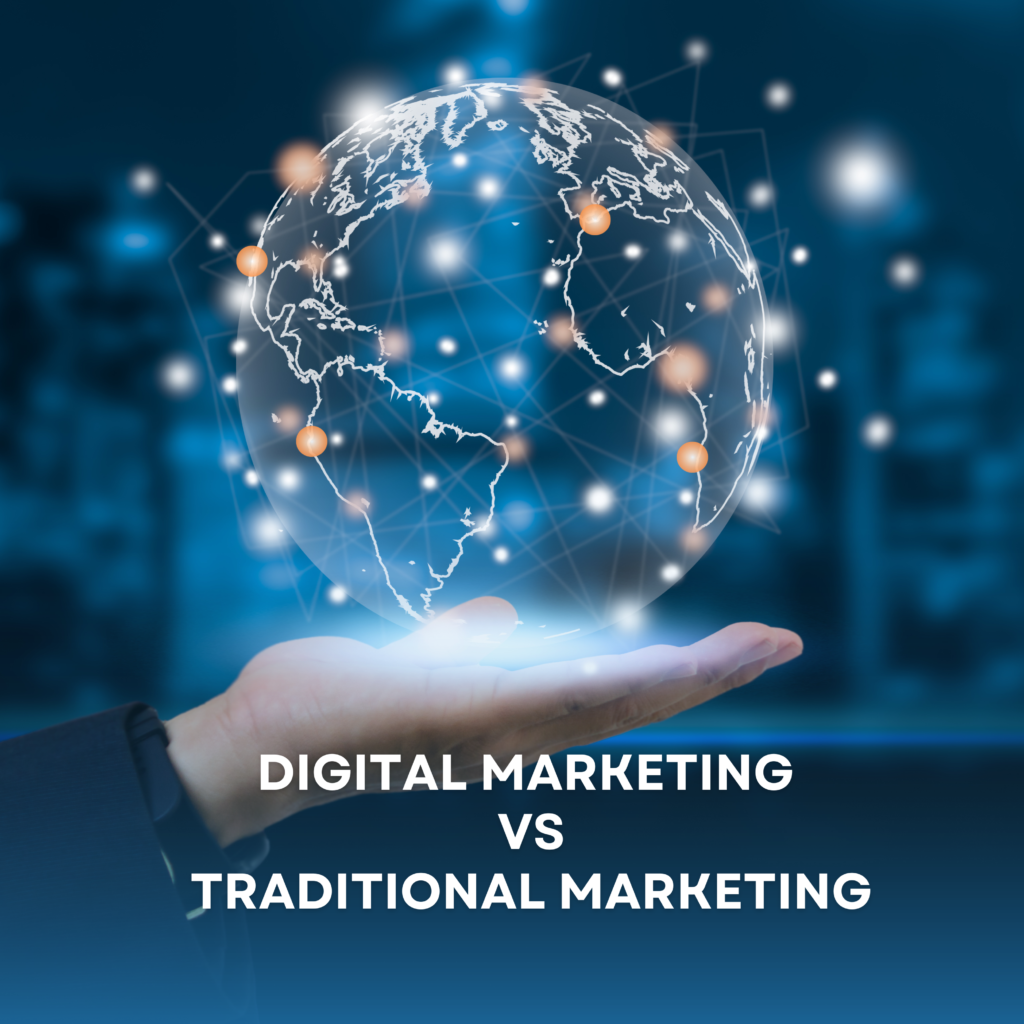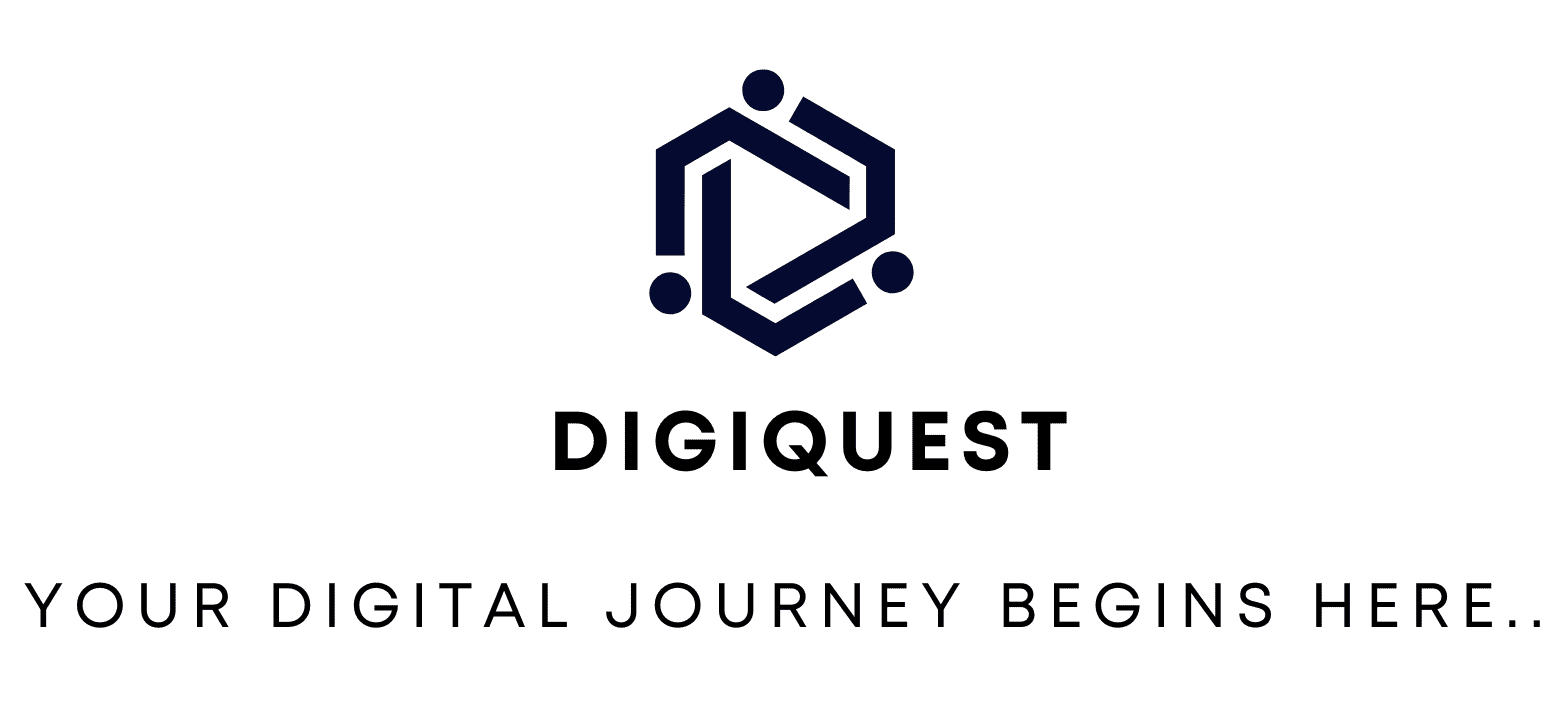
Introduction
Marketing is the backbone of any business, helping brands reach their target audience and increase sales. Over the years, marketing has evolved significantly, leading to two primary forms: Digital Marketing and Traditional Marketing. In today’s world, businesses must choose the right marketing strategy to stay ahead.
Digital vs Traditional Marketing is a common debate among marketers. While traditional marketing includes TV ads, billboards, and print media, digital marketing focuses on online platforms like social media, search engines, and email marketing.
Both have their own advantages and drawbacks, but which one is better for your business? Let’s explore in detail.
Digital vs Traditional Marketing: Key Differences
Here is a table highlighting the main differences in digital vs traditional marketing:
| Feature | Digital Marketing | Traditional Marketing |
|---|---|---|
| Medium | Online platforms (websites, social media, etc.) | Offline platforms (TV, newspapers, radio) |
| Cost | Generally more cost-effective | Can be expensive (TV ads, billboards) |
| Audience Reach | Global reach | Mostly local or regional reach |
| Interaction | Two-way communication (engagement, feedback) | One-way communication |
| Tracking & Analytics | Real-time data, performance tracking | Difficult to measure effectiveness |
| Personalization | Highly targeted and personalized | Less personalized |
| ROI | Measurable, better control over spending | Hard to track returns |
| Speed | Instant implementation & modification | Slow implementation & changes |
Now, let’s take a deeper look into digital and traditional marketing.
What is Digital Marketing?
Digital marketing refers to the use of online platforms, digital channels, and internet-based strategies to promote brands, products, or services. It involves various techniques like SEO (Search Engine Optimization), Social Media Marketing (SMM), Content Marketing, Email Marketing, Pay-Per-Click (PPC) Advertising, and more to connect with potential customers.
Unlike traditional marketing, which relies on offline methods like TV, newspapers, and billboards, digital marketing is data-driven, highly targeted, and cost-effective. It allows businesses to reach a global audience, track performance in real-time, and engage directly with customers.
With the rise of smartphones, social media, and search engines, digital marketing has become essential for businesses to stay competitive and grow in the modern marketplace.
Why is Digital Marketing Important?
Digital marketing is crucial for businesses in today’s digital age because it offers cost-effective, data-driven, and highly targeted marketing solutions. Here’s why it matters:
1. Global Reach
- Unlike traditional marketing, digital marketing allows businesses to reach a worldwide audience.
- Social media, websites, and search engines help brands expand beyond their local market.
2. Cost-Effective Marketing
- Digital marketing is more affordable than traditional advertising methods like TV or print ads.
- Small businesses can run effective campaigns on a low budget through social media and SEO.
3. Targeted Advertising
- Businesses can target specific demographics based on age, location, interests, and behavior.
- PPC ads, social media ads, and email marketing ensure messages reach the right people.
4. Measurable Results
- Tools like Google Analytics and Facebook Insights provide real-time performance data.
- Businesses can track traffic, engagement, conversions, and ROI accurately.
5. Higher Engagement and Brand Awareness
- Interactive content like videos, blogs, and social media posts help engage customers.
- Regular engagement builds trust and brand loyalty.
6. Flexibility and Adaptability
- Businesses can adjust their marketing strategies quickly based on performance.
- Real-time feedback helps optimize campaigns for better results.
7. Increased Sales and Lead Generation
- SEO, PPC, and social media marketing drive more traffic to business websites.
- Leads can be nurtured through email campaigns and retargeting strategies.
What is Traditional Marketing?
Traditional marketing refers to offline marketing techniques used before the rise of the internet. It includes print ads, TV commercials, billboards, direct mail, radio ads, and telemarketing. Businesses have used these methods for decades to reach a broad audience.
Key Characteristics of Traditional Marketing:
- Offline Promotion – Uses physical marketing channels like newspapers, TV, and radio.
- Mass Audience Approach – Targets a broad audience without precise segmentation.
- One-Way Communication – Businesses deliver messages, but customer interaction is limited.
- Long-Term Impact – Some traditional ads (e.g., billboards) have lasting visibility.
- Higher Costs – TV ads, billboards, and print ads require significant investment.
Examples of Traditional Marketing:
- TV & Radio Advertisements – Commercials aired on popular channels and stations.
- Print Media – Newspapers, magazines, brochures, and flyers.
- Billboards & Hoardings – Large-scale outdoor advertisements in public spaces.
- Direct Mail – Promotional letters, catalogs, and postcards sent via post.
- Telemarketing – Phone calls made to potential customers to promote products/services.
Why is Traditional Marketing Important?
Despite the growth of digital marketing, traditional marketing remains a powerful tool for businesses. It plays a crucial role in building brand awareness, reaching offline audiences, and creating a lasting impact. Here’s why traditional marketing is still important:
1. Reaches a Wide Audience
- TV, radio, newspapers, and billboards reach millions of people at once.
- Ideal for businesses targeting local and older audiences who may not be active online.
2. Builds Strong Brand Recognition
- TV commercials, print ads, and billboards create memorable impressions.
- Repeated exposure in newspapers, magazines, and hoardings helps in brand recall.
3. More Trustworthy and Credible
- People trust TV, newspaper, and radio ads more than online ads.
- Print media and television marketing establish a sense of authenticity.
4. Works Well for Local Marketing
- Newspapers, flyers, and billboards effectively target local customers.
- Small businesses, restaurants, and retail stores benefit from offline marketing.
5. No Internet Dependency
- Works without internet access, making it accessible to all demographics.
- Suitable for areas with low digital penetration or customers who prefer offline content.
6. Ideal for High-Impact Campaigns
- Large-scale advertisements (e.g., Super Bowl ads, newspaper front-page ads) create mass awareness.
- Perfect for businesses that want to make a big statement in the market.
7. Tangible and Long-Lasting
- Flyers, brochures, and magazines provide physical marketing materials that people can keep.
- Billboards and posters stay in public view for extended periods
Forms of Digital Marketing
Digital marketing consists of multiple strategies to engage audiences effectively:
- Search Engine Optimization (SEO) – Optimizing websites to rank higher on search engines like Google.
- Social Media Marketing (SMM) – Promoting products on platforms like Facebook, Instagram, and LinkedIn.
- Content Marketing – Creating valuable content like blogs, videos, and infographics.
- Email Marketing – Sending targeted emails to nurture leads and drive conversions.
- Pay-Per-Click (PPC) Advertising – Running ads on search engines and social media.
- Affiliate Marketing – Earning commission by promoting other brands.
- Influencer Marketing – Partnering with influencers to promote products.
Forms of Traditional Marketing
Traditional marketing also has various forms that businesses use to reach their audience:
- Television Advertising – Commercials aired on TV channels.
- Radio Advertising – Promotional messages broadcasted on radio.
- Print Advertising – Newspaper, magazine, and brochure ads.
- Billboards & Hoardings – Large outdoor advertising structures.
- Direct Mail – Sending flyers, postcards, or catalogs to potential customers.
- Event Marketing – Sponsoring or hosting live events for brand promotion.
Pros and Cons of Digital Marketing
Pros of Digital Marketing
Cons of Digital Marketing
Pros and Cons of Traditional Marketing
Pros
Cons
Digital vs Traditional Marketing FQA’S
1. Which is better: digital marketing or traditional marketing?
It depends on your business goals. Digital marketing is cost-effective and offers better tracking, while traditional marketing is good for credibility and local branding.
2. Can digital marketing replace traditional marketing?
Not entirely. Many businesses use a combination of both for maximum reach and effectiveness.
3. Is digital marketing cheaper than traditional marketing?
Yes, digital marketing is usually more affordable and allows targeted advertising, making it cost-effective.
4. How do businesses decide between digital and traditional marketing?
Businesses should consider their target audience, budget, and marketing goals. If they want global reach and cost-effective strategies, digital marketing is ideal. For local reach and brand credibility, traditional marketing may work better.
5. Is traditional marketing still effective in 2025?
Yes, traditional marketing is still effective, especially for industries like real estate, luxury brands, and local businesses. However, digital marketing is growing rapidly due to its cost efficiency and better targeting.
6. Can small businesses afford traditional marketing?
Traditional marketing can be expensive, especially TV and print ads. Small businesses can focus on cost-effective traditional methods like local newspapers, flyers, and event sponsorships while complementing them with digital marketing.
7. How can businesses combine digital and traditional marketing?
A business can use a mix of both by promoting TV ads on social media, using QR codes on print ads to direct customers to websites, and integrating email marketing with offline events.
Conclusion
Both digital marketing and traditional marketing have their strengths and weaknesses. The right strategy depends on your business goals, target audience, and budget.
Want to learn more about digital marketing strategies? Check out our advanced digital marketing course and start your journey today!
